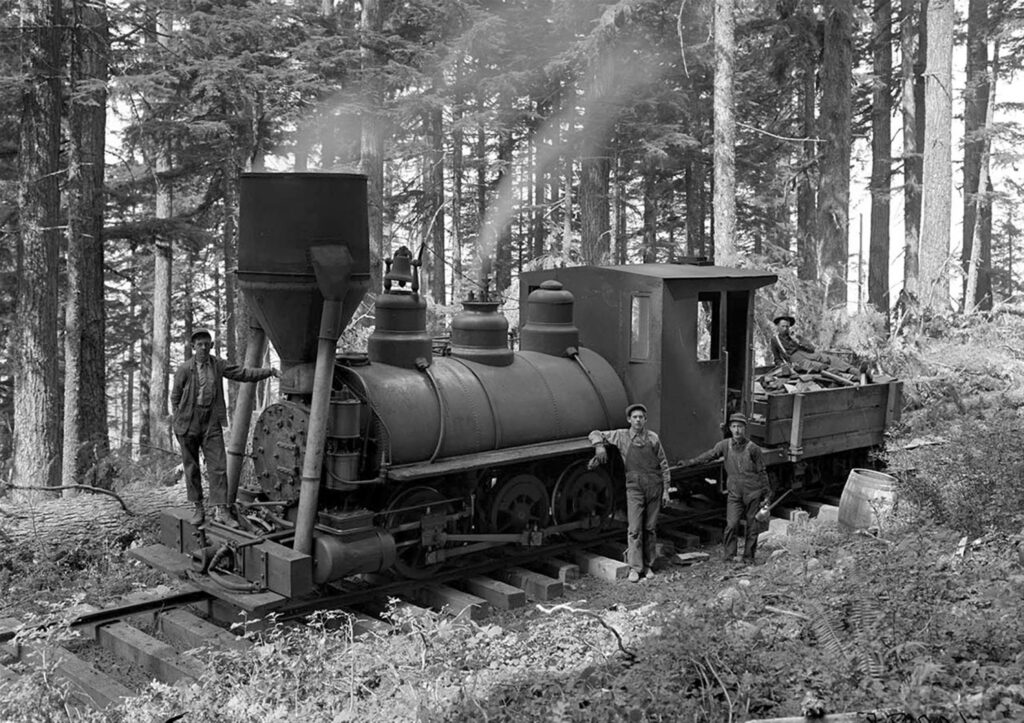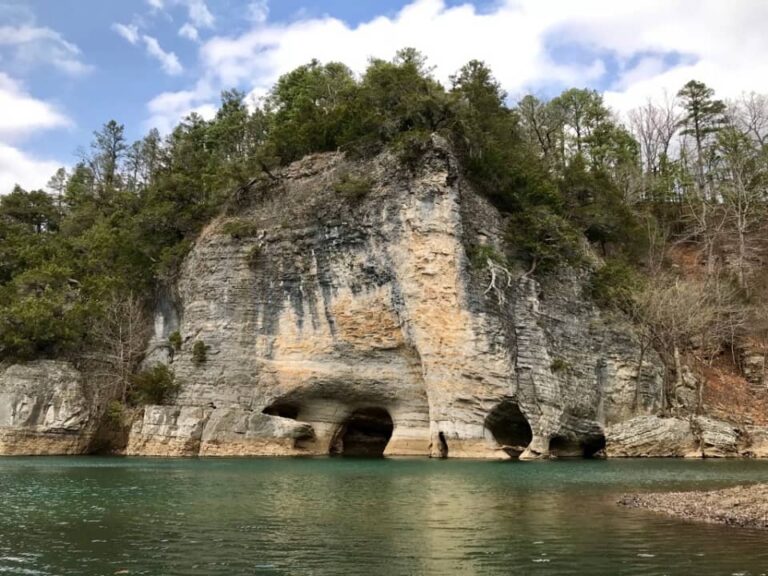Look, I’ll be straight with you—most folks think of Iowa corn and Chicago skylines when they picture the Midwest. But after fifteen years of tramping around these back roads and forgotten trails, I can tell you there’s something way more interesting hiding out here: ghost towns. Real ones. Not the tourist traps with gift shops, but honest-to-goodness abandoned places where you can still hear the wind whistling through broken windows and wonder what the heck happened here.
I’ve been to maybe forty of these places now, from crumbling railroad stops in South Dakota to old logging camps buried in Wisconsin’s north woods. Each one tells you something different about how tough it was—and still is—to make it out here on the prairie. These aren’t your Hollywood ghost towns with swinging saloon doors and tumbleweeds. These are quiet places where regular people tried to build something and, for whatever reason, couldn’t quite make it stick.
The thing about ghost town hiking is that it gets under your skin. Once you’ve walked through your first abandoned main street, felt that eerie silence where there used to be voices and laughter, you start noticing the signs everywhere. Empty farmsteads along county roads. Old grain elevators standing alone against the sky. Church steeples poking up out of overgrown fields. This whole region is dotted with the bones of communities that just couldn’t hang on.
Why Towns Die Out Here (It’s Not What You’d Think)

After hiking to enough of these places, you start to see the patterns. It’s rarely one big dramatic thing that kills a town. More often, it’s like watching a slow leak in a tire—you don’t notice it at first, then suddenly you’re stranded on the side of the road.
The Railroad Giveth, The Railroad Taketh Away
I can’t tell you how many ghost towns I’ve found that are basically just a mile or two off the old rail lines. Back in the day, if the train stopped at your town, you had it made. Steam engines needed water every twenty miles or so, and coal too. Whole communities sprang up around those stops—not just to service the trains, but because that’s where people got on and off, where goods got loaded and unloaded.
I remember hiking to this little place called Monowi in Nebraska—well, it’s not technically a ghost town since one person still lives there, but you get the idea. The old depot is still standing, and you can see exactly how the whole town was laid out around those tracks. Main Street ran perpendicular to the rails, with the businesses facing the depot. When that 4:15 freight came through, everybody knew about it.
Then diesel engines came along in the ’50s. Suddenly trains could run 500 miles without stopping. All those little depot towns? Obsolete overnight. I’ve hiked past dozens of old water towers standing alone in fields, their towns long gone. There’s something haunting about that—a piece of infrastructure outlasting the entire reason it was built.
The interstate system was the final nail in the coffin for a lot of these places. When I-80 or I-35 went around a town instead of through it, that was usually the end. No more travelers stopping for gas, food, or a place to sleep. Main Street dried up, and eventually, so did the town.
I’ve driven old Highway 30 across Nebraska, which used to be the main east-west route before I-80. Every twenty miles or so, you’ll come across these little towns that are hanging on by a thread. Most have maybe one business left—usually a bar or a grain elevator. The rest is just empty storefronts and houses slowly falling apart. It’s like looking at the future ghosts of the Midwest.
One-Trick Ponies Don’t Last Long
The other thing you notice hiking around up north is how many ghost towns were built around a single resource. Copper in Michigan’s UP, iron ore in Minnesota, timber in Wisconsin. When that resource played out or the market crashed, there wasn’t a Plan B.
I’ve explored old logging camps in Wisconsin where you can still see the stumps from trees that were 200 years old when they cut them down. Took maybe twenty years to clear-cut what had taken centuries to grow. When the last big pine fell, the sawmill closed, the loggers moved on, and the town just… ended.
Same story with mining towns. I hiked up to this place called Phoenix on the Keweenaw Peninsula—beautiful country, by the way, if you ever get up that way. Used to be a copper boom town with thousands of people. Now there’s just one old church still standing and some foundations you can barely make out through the birch trees.
The copper mines up there are something else. I’ve hiked around the Quincy Mine near Hancock, and the scale of the operation is mind-blowing. Miles of tunnels, massive shaft houses, whole towns built just to support the miners. But when the copper played out and the price dropped, it all came to an end practically overnight. Towns that had 5,000 people in 1900 were down to a few hundred by 1920.
Mother Nature Has the Final Say
Sometimes the land itself just said “no more.” The Dust Bowl wiped entire counties off the map in the ’30s. I’ve driven through parts of Kansas and Nebraska where you can still see the old farmstead foundations, but there’s nobody around for miles. The wind and drought just wore people down until they gave up and headed to California or Detroit.
Even without a major disaster, farming out here has always been a gamble. Bad weather, crop diseases, falling prices—it only takes a few bad years to break a family farm. And when the farms go, the little towns that depend on them go too.
I remember hiking around this abandoned town site in western Kansas—nothing left but a cemetery and some concrete foundations. The caretaker at the cemetery told me the whole area got hit by seven straight years of drought in the ’50s. Families that had been farming the same land for generations just packed up and left. The town died within five years.
Climate change is making this worse too, though people don’t always want to talk about it. I’ve seen parts of the Great Plains that used to be wheat country turn into grassland because it’s too dry to farm anymore. When agriculture changes, everything else has to change too.
Ghost Towns Worth the Hike
Let me tell you about some places I’ve actually been to—places where you can still park your truck and walk around, assuming you do it respectfully. These aren’t all the ghost towns in the Midwest, not even close, but they’re ones I can personally vouch for.
Ardmore, South Dakota

This one’s easy to find, just a mile north of the Nebraska border off Highway 18. I stopped here on a cross-state hiking trip a few years back. Used to be a railroad town—had about 300 people at its peak in the 1920s. President Coolidge even stopped here for a picnic, which is probably the most exciting thing that ever happened in Ardmore.
The old water tower’s still there, rusted but standing. There’s a schoolhouse you can peek into (from the outside—don’t go climbing around) and a few house foundations. It’s not much to look at, but there’s something peaceful about the place. You can imagine what it was like when the 3:15 train pulled in and the whole town turned out to see who was getting off.
The hike from where you can park to the main town site is maybe half a mile across pretty flat prairie. Watch out for prairie dog holes—I nearly twisted my ankle in one. There’s a historical marker that tells the basic story, but like most of those markers, it doesn’t really capture what it must have been like to live here.
Ha Ha Tonka State Park, Missouri
Okay, this one’s cheating a little because it’s actually a state park now, but the ruins are incredible. Some rich guy from Kansas City decided to build himself a European-style castle on a bluff overlooking the lake. Sixty rooms, imported stone, the whole nine yards.
Never got to enjoy it, though. Died in a car wreck right after construction started. His sons finished it, but it burned down in 1942. Now you can hike up to these amazing stone ruins—walls and arches and staircases leading nowhere. It’s like something out of a fairy tale, except it’s right here in Missouri.
The hiking’s good too—several trails, caves to explore, and that spring is something else. Clear as glass and cold as winter, even in July. The main trail to the castle ruins is about a mile and pretty steep in places, but worth every step. Best time to go is early morning or late afternoon when the light hits those stone walls just right.
Cairo, Illinois

This one’s tough to talk about because it’s not really abandoned—there are still people living there, just not many. Used to be a major river port where the Mississippi and Ohio meet. Should have been a great location, right?
But Cairo’s got a dark history. Racial violence, flooding, economic decline—it’s like everything that could go wrong did go wrong. I drove through a few years ago, and it’s heartbreaking. Beautiful old buildings just falling apart, whole city blocks empty. It’s a ghost town that’s still technically alive, which somehow makes it even sadder.
The thing about Cairo is that it shows you how a town can die from the inside out. It wasn’t railroads or resources that killed Cairo—it was people. Hatred, fear, and the inability to change with the times. There’s a lesson in that, though it’s not a comfortable one.
Nelsonia, Wisconsin
Up in Lincoln County, there’s this old logging town that most people have never heard of. Nelsonia was built in 1890 by the C.H. St. John Lumber Company. They clear-cut everything within a ten-mile radius, then packed up and left when the trees were gone.
Getting there requires a bit of bushwhacking—the old logging roads are grown over now. But if you can find it, there’s still a foundation or two and some old machinery rusting in the woods. The forest has pretty much reclaimed the whole site, which is somehow fitting. Nature gets the last word.
I hiked in there during deer season a few years ago (wearing plenty of orange, naturally) and spent the better part of a day just wandering around. You can still see where the main street was, though it’s just a depression in the forest floor now. Found some old bottles and a horseshoe, but left them where they were.
Janesville, Iowa
This one hits close to home because I grew up about fifty miles from here. Janesville isn’t completely dead—there are still a few hundred people hanging on—but it’s a shadow of what it used to be. The downtown is mostly empty storefronts, and whole neighborhoods have maybe one or two occupied houses on each block.
What makes Janesville interesting is that you can see the whole process happening in real time. It’s not a historical curiosity like some of the other places I’ve mentioned—it’s a town in the act of dying. The school consolidated with a neighboring district a few years ago. The last grocery store closed in 2018. Young people graduate and don’t come back.
I’ve walked around Janesville several times over the years, and each time there are fewer lights on at night. It’s sobering to watch a community slowly fade away, knowing that the people still living there are doing their best to keep it going.
Centralia, Pennsylvania

Wait, that’s not in the Midwest. But there’s a similar story in Ohio—a little place called Boston that had to be evacuated because of underground coal fires. Not quite the same scale as Centralia, but the same basic idea. Sometimes the ground itself becomes uninhabitable.
Actually, let me tell you about a place that really is in the Midwest: Picher, Oklahoma. Technically it’s more South than Midwest, but it’s close enough, and the story’s worth telling. This was a lead and zinc mining town that became so polluted they had to relocate the entire population. I drove through there in 2010, a few years after the buyout. Street after street of empty houses, some with doors still hanging open like people just walked away.
The weird thing about Picher is that the environmental damage is invisible until you know what to look for. Chat piles—mountains of mining waste—everywhere. Sinkholes where the ground collapsed into old mine shafts. Water that’ll kill you if you drink it. It looks almost normal until you realize nobody’s home.
The Forgotten Company Towns
One category of ghost town that really gets to me is the company town. These were places built by corporations to house their workers, usually in mining or logging areas. They were never meant to be permanent communities—just temporary housing for temporary jobs.
I’ve explored several old company towns in northern Michigan and Wisconsin. They’re different from regular ghost towns because they were never really “towns” in the traditional sense. No local government, no main street businesses owned by residents. Everything belonged to the company.
When the company left, there was literally nothing holding the place together. No community institutions, no local ownership, no reason for anyone to stay. The houses were either moved somewhere else or just left to rot. It’s a stark reminder of what happens when a community has no roots.
Fayette, Michigan is one of the better-preserved examples. It’s a state park now, but you can still see the layout of the old iron smelting operation. Company houses lined up in neat rows, the manager’s house on the hill, the furnaces down by the water. It’s like a museum of industrial capitalism.
How to Explore Safely (Please Don’t Be That Guy)
Look, I get it. There’s something irresistible about these places. But every year I hear about some yahoo getting hurt or arrested because they didn’t use common sense. Here’s what I’ve learned from doing this the right way:
Know Where You Can and Can’t Go
Half these places are on private land, and farmers don’t mess around with trespassers. If you’re not sure, ask. Most landowners are decent folks who’ll let you look around if you’re respectful about it. The ones who won’t probably have good reasons.
State parks and historical sites are obviously fair game, but even then, stay on the trails and don’t climb on structures. That “No Trespassing” sign isn’t a suggestion.
I always carry a county plat map or use an app like onX Hunt that shows property boundaries. Can’t tell you how many times that’s saved me from accidentally wandering onto someone’s land. Property lines out here can be confusing, especially when old roads and fence lines don’t match up with current ownership.
These Places Are Trying to Kill You
I’m not being dramatic. Old buildings are death traps. Rotted floorboards, broken glass, rusty metal everywhere. I’ve seen wells and cisterns hidden by tall grass that could swallow you whole. And don’t get me started on old mine shafts.
Wear good boots, bring a flashlight, and for the love of all that’s holy, don’t go alone. Tell somebody where you’re going and when you’ll be back. Cell service is spotty out here, and a twisted ankle can turn into a real emergency fast.
I always carry a basic first aid kit, plenty of water, and a GPS device. Those county roads all look the same, and it’s easy to get turned around. I’ve been lost more than once, and it’s not fun when the sun starts going down and you’re not sure which way leads back to your truck.
Watch out for old foundations too. They’re usually just holes in the ground now, covered by vegetation. Easy to step into one and break a leg. And be careful around any standing structures—they might look solid, but looks can be deceiving.
Seasonal Considerations
The best time to explore ghost towns is late fall or early spring when the vegetation is down and you can actually see what you’re looking at. Summer hiking in some of these places means fighting through shoulder-high weeds, and you can’t see hazards until you’re right on top of them.
Winter can be good too if you’re prepared for it, but be extra careful about ice on old foundations and structures. I once spent a very uncomfortable hour stuck in an old cellar hole because the wooden cover I stepped on was rotten and gave way. Lucky I had my cell phone and could call for help.
Tick season is something to think about too. These abandoned lots are perfect tick habitat, and some of the diseases they carry are no joke. I always do a tick check after every ghost town hike, and I treat my clothes with permethrin during tick season.
Take Nothing But Pictures
Every time someone pockets an old bottle or pulls a board off a building for a “souvenir,” they’re destroying a piece of history. These places are fragile. Once they’re gone, they’re gone for good.
I’ve been photographing ghost towns for years, and some of the places I visited early on are completely gone now—collapsed buildings, grown over with weeds, no trace they ever existed. The best thing you can do is document them and leave them exactly as you found them.
Metal detecting is particularly problematic. I know it’s tempting to look for old coins or artifacts, but most of these sites are either on private property (where metal detecting without permission is trespassing) or have some kind of historical protection. Even if it’s legal, it’s not ethical. Those artifacts belong to the site, not in someone’s collection.
Research and Planning
Half the fun of ghost town hunting is the research. County historical societies are gold mines of information, and the old-timers who volunteer there usually have great stories. They can tell you not just where to find abandoned places, but who lived there and why they left.
Newspaper archives are another great resource. Most small-town papers covered every wedding, funeral, and church supper, so you can get a real sense of what life was like in these places. The State Historical Society websites usually have digitized collections you can search online.
Don’t overlook cemetery records either. Sometimes the cemetery is all that’s left of a town, but the headstones can tell you a lot about who lived there. Lots of German and Scandinavian names in the upper Midwest, Irish names in the coal mining areas, that sort of thing.
Google Earth is invaluable for scouting locations. You can spot old building foundations, abandoned roads, and other features that might not be marked on regular maps. Sometimes you can even see the grid pattern of old streets in places where the buildings are long gone.
Why This Matters
After all these years of hiking around abandoned places, I’ve come to think of them as outdoor museums. They tell the story of regular people trying to make a go of it in a hard place. Some succeeded for a while, others failed quickly, but they all tried.
There’s something humbling about standing in the ruins of someone’s dreams. Makes you think about your own life, your own plans, how nothing lasts forever. But there’s also something hopeful about it. These places prove that people will keep trying, keep building, keep hoping, even when the odds are stacked against them.
That’s about as Midwestern as it gets, if you ask me. We might not always succeed, but we don’t give up easy either.
The other thing these ghost towns teach you is about resilience. Not just the kind of resilience that keeps a town alive, but the kind that lets people start over when everything they’ve built falls apart. The families who left these places didn’t just disappear—they went somewhere else and tried again. Kids who grew up in Ardmore or Nelsonia probably raised families in Chicago or Milwaukee or Los Angeles.
In a way, these ghost towns are part of a larger American story about mobility and reinvention. They represent the places people left behind in search of something better. That’s not a story of failure—it’s a story of hope.
Planning Your Own Ghost Town Adventures
If I’ve convinced you to try some ghost town hiking of your own, here’s my advice for getting started:
Start close to home. Every state in the Midwest has abandoned towns, and you don’t need to drive hundreds of miles to find them. Check with your county historical society or local library—they usually have maps and information about local ghost towns.
Don’t expect too much from your first few trips. Most ghost towns don’t have much left to see. A few foundations, maybe an old grain elevator or water tower, possibly a cemetery. The real reward is in imagining what used to be there and thinking about the people who called these places home.
Bring a good camera and take lots of pictures. These places are disappearing fast, and your photos might be the only record left in a few years. I’ve got pictures of buildings that collapsed the following winter, towns that are now completely grown over.
Consider making it a family activity. Kids love exploring old places, and it’s a great way to teach them about local history. Just be extra careful about safety when you’ve got children along.
Most importantly, be respectful. These aren’t theme parks or movie sets—they’re the remains of real communities where real people lived and worked and raised families. Treat them with the dignity they deserve.
Next time you’re driving across one of these states and see a historical marker for some town you’ve never heard of, consider taking the detour. Park the car, lace up your boots, and take a walk through somebody else’s history. Just remember to treat it with respect. These ghost towns have stories to tell, but only if we’re careful enough to let them keep telling them.
The Midwest might not have the dramatic landscapes of the West or the historical glamour of the East Coast, but it’s got these quiet monuments to the American dream scattered across every county. They’re worth seeking out, worth preserving, and worth remembering. In their silence, you can hear the echoes of all the ordinary people who tried to build something lasting in an uncertain world. And isn’t that what we’re all trying to do?
Ready for more Midwest family fun? Bookmark HiddenMidwest.com for curated guides, honest reviews, and real stories from families who’ve been there, done that, and lived to tell the tale! Want more? Check out our X, Pinterest, Insta, or Youtube for more action-packed Midwest adventures.

